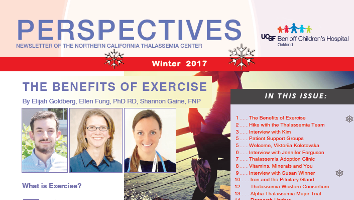Introduction
As early diagnosis and treatment of thalassemia are improving the prognosis of pediatric and young adult thalassemia patients, the major cause of illness and mortality has shifted from the problems of hemoglobin-deficient anemia to iron overload associated with chronic blood transfusion therapy. Heart, liver and other organ failure due to iron toxicity is the leading cause of death for thalassemia patients in the developed world. In chronically-transfused thalassemia patients, the body is receiving large amounts of exogenous iron and, having no mechanism to excrete the extra iron, stores it primarily in the spleen, liver, endocrine organs, and heart. Iron storage is further compounded by increased iron absorption from food as a way to combat anemia.
Aggressive monitoring of body iron burden is key to the survival and well-being of a chronically-transfused patient. There are several methods of iron assessment. The easiest, most affordable, least reliable and most common method is a serum ferritin test. This involves drawing a small sample of blood and testing for its ferritin content, which is an important iron-storage protein. Ferritin tests are useful for measuring gross iron overload or dramatic reduction in iron levels, but are limited when attempting to finely measure actual organ storage of iron. Several factors can affect test results: inflammation or infection of the liver, liver disease (such as fibrosis or hepatitis), hemolysis or breakdown of red blood cells during the blood draw or due to rough handling of the sample, vitamin C deficiency, or even too much alcohol the night before a test. Ferritin tests remain an approximation rather than an accurate indicator of iron stores.
A second method of measuring body iron burden is the liver biopsy, a direct sampling of burdened tissue, during which a small piece of liver tissue is removed and examined for iron fall between storage. The method is an invasive procedure, sometimes involving a short hospital stay. As a result, many patients are reluctant to get a liver biopsy and are worried about its safety. However, a study from Italy, where thalassemia is extremely prevalent, showed that of 1000 patients biopsied over 5 years, no complications occurred. This is due in part to improved ultrasound technology which allows physicians to see the liver before the procedure.
A third, very accurate method of measuring iron is through a radiologic study performed by a machine called
Due to the sensitivity of the device and the nature of the measurements, patients with pacemakers, artificial joints, dental braces, metallic surgical staples or clips, indwelling catheters or ports with metallic components, weights of less than 25 kg or who are less than 5 years of age MAY NOT be eligible for this measurement. Appointments are available for the Ferritometer in Oakland as needed. If you treat any thalassemia patients and wish to set up an appointment for a non-invasive liver iron measurement at the Ferritometer (Oakland), please contact the Thalassemia Center at Children's Hospital Oakland: 510-428-3885 x4248.
Click here to learn more about the ferritometer.
To learn more about iron overload, including treatment recommendations and systems effected by iron-overload, click here.
Dr. Nancy Olivieri of Toronto and Dr. Gary Brittenham of Cleveland studied several patients and found that after a specific threshold - 7 mg of hepatic (liver) iron per gram dry weight - a patient will experience increased risk of illness and death. Those with iron levels over 15 mg/g dry weight experience substantial risk for death. Conversely, levels under 3 mg/g dry weight, while considered normal for non-transfused people, should be avoided for transfused patients because of the associated risks of Desferal toxicity. These include growth problems, pulmonary toxicity, kidney dysfunction, spinal and bony changes (crucial for the growing child), auditory problems (tinitus or ringing in the ears), and ocular abnormalities. Thus it is important for thal patients to keep their body iron levels between a specific range of 3 - 7 mg/g dry weight for optimal health. Dr. Olivieri recommends annual liver biopsies at the same time every year. For patients with steady levels, the time between biopsies can increase 1 1/2 to 2 years.
One of the best ways to rid the body of extra iron is through daily infusions of desferrioxamine or Desferal. Desferal actively binds iron that it encounters in the body and excretes it in urine and stool. A study conducted by Sir David Weatherall et al showed that optimal iron chelation occurred when Desferal was infused 24 hours a day every day, while 12 hours of infusion was 80% as effective as a 24-hour infusion. For most patients' lifestyles, though, this amount of therapy is inconvenient. Many people do not allot twelve hours every evening for Desferal therapy. However, the longer a patient uses Desferal, the better for their health. If, for example, a person returns home at two in the morning, he should not forego the night because of reduced treatment time. Nor should he double the amount of Desferal, since concentrated doses are irritating to the body. Dr. Olivieri suggests patients think about maximizing the amount of Desferal time over a week rather than day to day. This way, hours clocked in, no matter when or where, work toward chelating iron.
Chelation should begin one year after the start of chronic transfusions if a biopsy records a hepatic (liver) iron of higher than 3.2 mg/g dry weight. A baseline assessment of height and a spinal X-ray should be taken to monitor growth, and the daily dose of Desferal should not exceed 35 mg/kg dry weight during the first three years. After that, dose should not exceed 50 mg/kg.
Vitamin C is a supplement patients can take to help Desferal do its job. Supplements of 100-200 mg should be taken concurrent with Desferal use, for example 1/2 hour after the start of one's daily therapy. A word of caution: excessive Vitamin C can exacerbate existing heart and liver problems by increasing the amount of iron circulating in the blood.
One of the most difficult problems associated with Desferal use is compliance. Nightly infusions of the medicine can be emotionally taxing and frustrating, especially for a patient entering their teen years. The effects of Desferal are not immediately felt, nor are the effects of iron overload, so teens often stop therapy for long periods of time. It is important to develop mentor programs and peer support groups early on to encourage good habits and regular use of Desferal. Only with consistent use of desferrioxamine can the damaging effects of iron overload be averted.
Read more about Desferal here.














